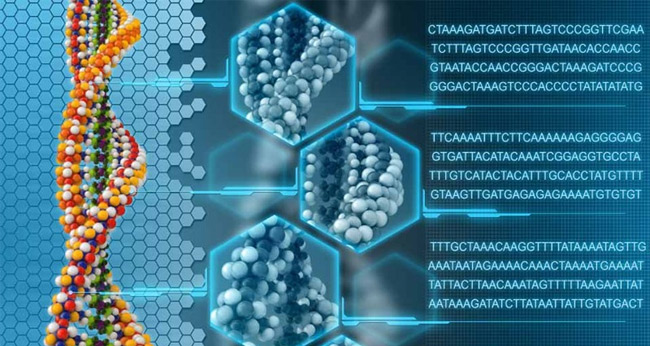Harvard scientists write 643 kilobytes of data into a DNA molecule

DNA molecules are an ideal information carrier: they are fantastically compact, stable, energy efficient and reliable: the proven duration of information storage in DNA is 3.5 billion years. Four grams of DNA molecules, theoretically, can hold all the information created by mankind for the year.
It is not surprising that scientists persistently try to find a convenient way to record and read information from DNA. Two years ago, biologists from Hong Kong were able to inject E.coli bacteria into a cell with synthetic DNA with a few kilobytes of encrypted information. One gram of bacteria contains about 10 million cells, and the information density of such a repository can be estimated at 900 TB per gram of bacteria.
')
Now, specialists from the University of Cambridge under the leadership of George Church (George Church) have challenged their Chinese colleagues and set a new record for the amount of information embedded in synthetic DNA. They were able to write the text of the whole book in 1 picogram of molecules (a picogram is one trillion grams). The scientific work was published on August 16, 2012 in the journal Science.
For coding information in DNA, a quadruple number system is used, according to the number of nucleotides (0 = A, 1 = T, 2 = C, 3 = G). Specialists from the Chinese University of Hong Kong translated the text into numbers on the ASCII table (i = 105; G = 71; E = 69; M = 77), then into the quaternary system (105 → 1221; 71 → 0113; 69 → 0111; 77 → 0131 ), and then in a chain of nucleotides.
iGem → 1221011301110131 → ATCTATTGATTTATGT
Specialists from Harvard used a different method. First, they fundamentally abandoned the use of living organisms, and introduced synthetic DNA into a molecule generated on a commercial DNA chip. Thus, the recorded information cannot be lost due to genetic mutations during the evolution of the carrier organism.
Secondly, they did not encode ASCII text, but binary code — the last book of Church, while preserving the formatting of HTML and JPEG illustrations. Before writing, the code was broken into 96-bit blocks. The total amount of recorded information was 54898 such blocks, that is, approximately 643 kilobytes, including service information — the 19-bit unique address of each block (in the diagram below it is shown in red).

In this experiment, an information recording density of 5.5 petabs per cubic millimeter was achieved. Such an indicator of information density can be compared with advanced developments in the field of quantum holography, but if it requires the creation of extremely low temperatures, the DNA molecules feel great at room temperature. “You can throw them where you want, in the desert or in your own yard, and they will be there in 400 thousand years,” says Professor Church.
Recording and reading information, that is, the synthesis and sequencing of DNA, of course, is much slower than writing and reading magnetic or optical drives. Therefore, biological molecules are more adapted for long-term storage of large amounts of data, and not for frequent reading.
via Science , ExtremeTech , Harvard Medical School , Habrahabr
Source: https://habr.com/ru/post/149814/
All Articles